Qradar SOAR -> Morpheus AI SOC
IBM’s QRadar SaaS exit forces Resilient users into XSIAM/XSOAR—or you can choose Morpheus, a proven AI-native Autonomous SOC with strong case management.
See Morpheus in Action

meet morpheus
Autonomous Security Operations
Alerts, investigations, playbooks and cases. Everything you need to go from alert to triaged to remediated—across your entire stack.






HOW IT WORKS
Your AI-Powered Security Automation Solution
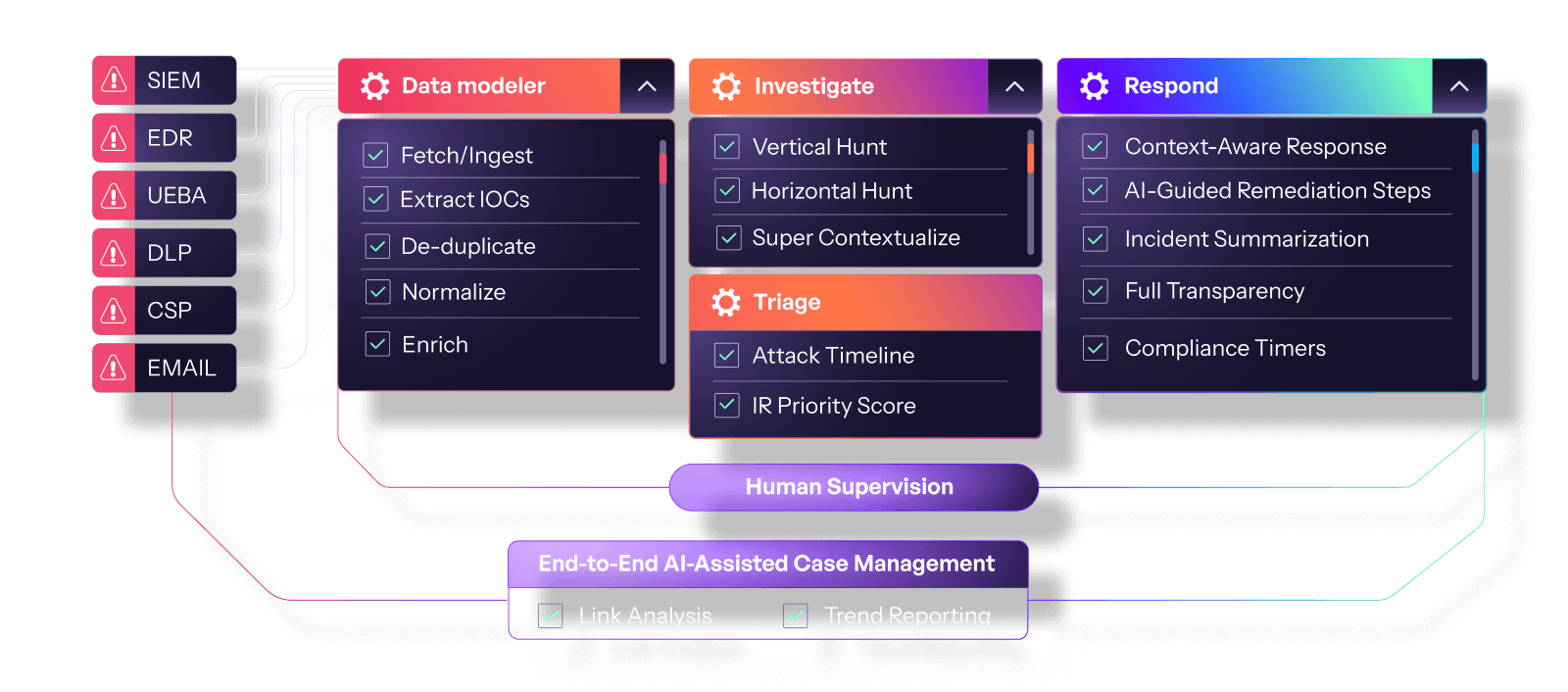
The Morpheus AI SOC product integrates with your tools, creating a unified alert/data structure that enables deep, autonomous investigation across your security stack. Built-in automation, case management and reporting help close the loop.
COMPARE
Migrate from Qradar SOAR to Morpheus—and Skip XSOAR
Keep your stack. Ditch lock-in. Get an open, AI-native SOC that speeds investigations and cuts MTTR.
Morpheus AI
Autonomy + control: a layer of AI automation that lets you keep your stack and add AI—with no lock-in.
Qradar SOAR
Lock-in risk. Exiting QRadar SOAR often means a Palo-aligned path; tying automation to one ecosystem can limit future tool choice.
Triage you can trust: Auto-dedupe, entity match, risk scoring—queues shrink before humans touch them.
Manual triage load. In QRadar/XSOAR, dedupe, entity linking, and risk scoring often rely on runbooks and tuning—queues drop only after content is built.
Faster investigations: One live timeline with AI summaries and suggested pivots—fewer clicks to answers.
Fragmented context. In QRadar/XSOAR, context may span consoles and tickets; timelines are often reconstructed—more clicks, slower pivots.
Direct, safe remediation: Contain/isolate/reset from the case with approvals and guardrails.
Write-back friction. In QRadar/XSOAR, containment/reset often routes through tickets/RBAC across tools—more steps before action executes.
Low-maintenance automation: AI generates and tests steps; you approve changes in Git.
Change management. Updates often involve pack edits, Python, and staged deploys; approvals/versioning live outside the flow.
Governance that scales: Clear approvals, evidence, and environment-bound actions for audit.
Drift risk. Promotion paths and per-connector settings may vary by environment; without tight bindings, configuration drift can creep in.
Open by design: 800+ integrations; swap tools anytime without breaking flows. SaaS and on premise options.
Consolidation pressure. Greater lock-in if you follow the platform path. Evaluate AI SOC options before migrating.
TRUSTED WORLDWIDE
Adopted by Enterprises and Top-Tier MSSPs

AI SOC CAPABILITY CHECK
See what you get with an AI SOC—check coverage in QRadar SOAR and XSOAR.

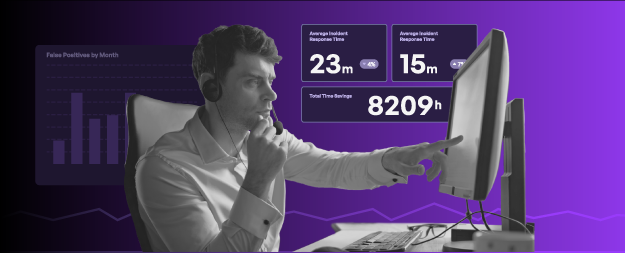
Request your free Qradar
SOAR cost comparison
ai soc features
Get AI Working in Your SOC
Contextual response
Respond to incidents with speed and precision using Morpheus AI’s contextual playbooks. Whether you prefer drag-and-drop simplicity or the power of AI-driven automation, Morpheus AI generates playbooks tailored to each event, for your environment.
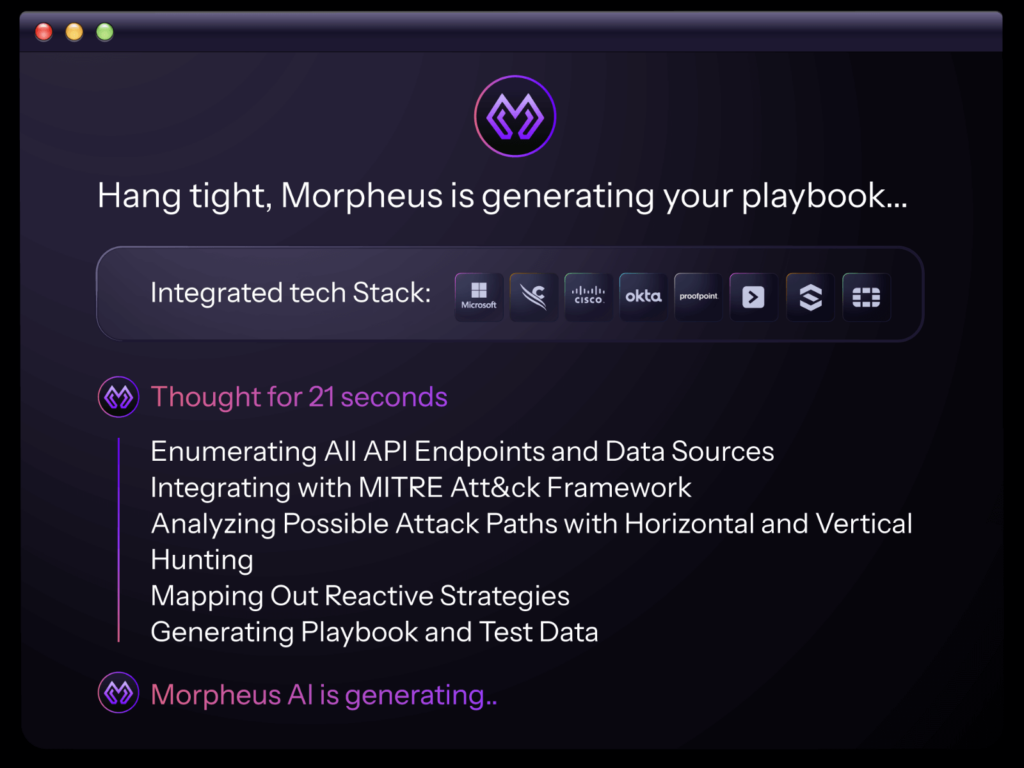
Proactive hunting
Stay one step ahead of attackers by proactively identifying and neutralizing potential risks. Morpheus AI’s contextual playbooks search horizontally and vertically across your environment, uncovering hidden threats and vulnerabilities.
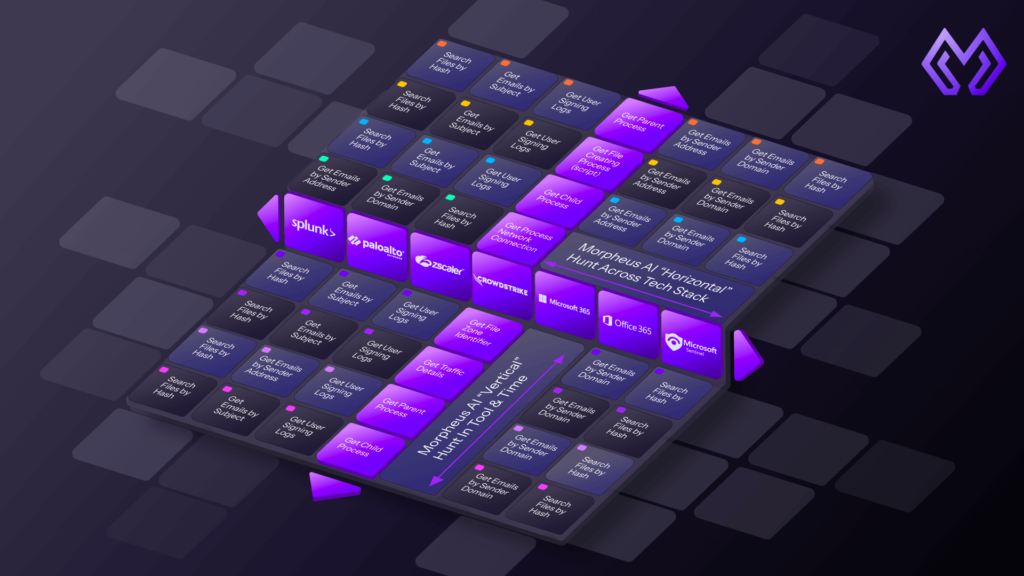
Full-stack timeline
Visualize the entire attack lifecycle with Morpheus AI’s full-stack timeline. From initial access to final impact, our timeline automatically compiles and presents the sequence of events, saving analysts hours of manual effort. Understand the complete story of each incident at a glance, empowering your team to respond swiftly and confidently.

Link analysis
Uncover hidden connections and accelerate investigations with Morpheus AI’s link analysis. Visualize the relationships between artifacts, IOCs, and incidents in an intuitive graph, revealing the full scope of the attack.

Risk score priority
Ensure no critical threat is overlooked using Morpheus AI’s comprehensive risk scoring. Our incident response priority score combines impact, threat confidence, contextual weight, and mitigation status to accurately assess the severity of each event.
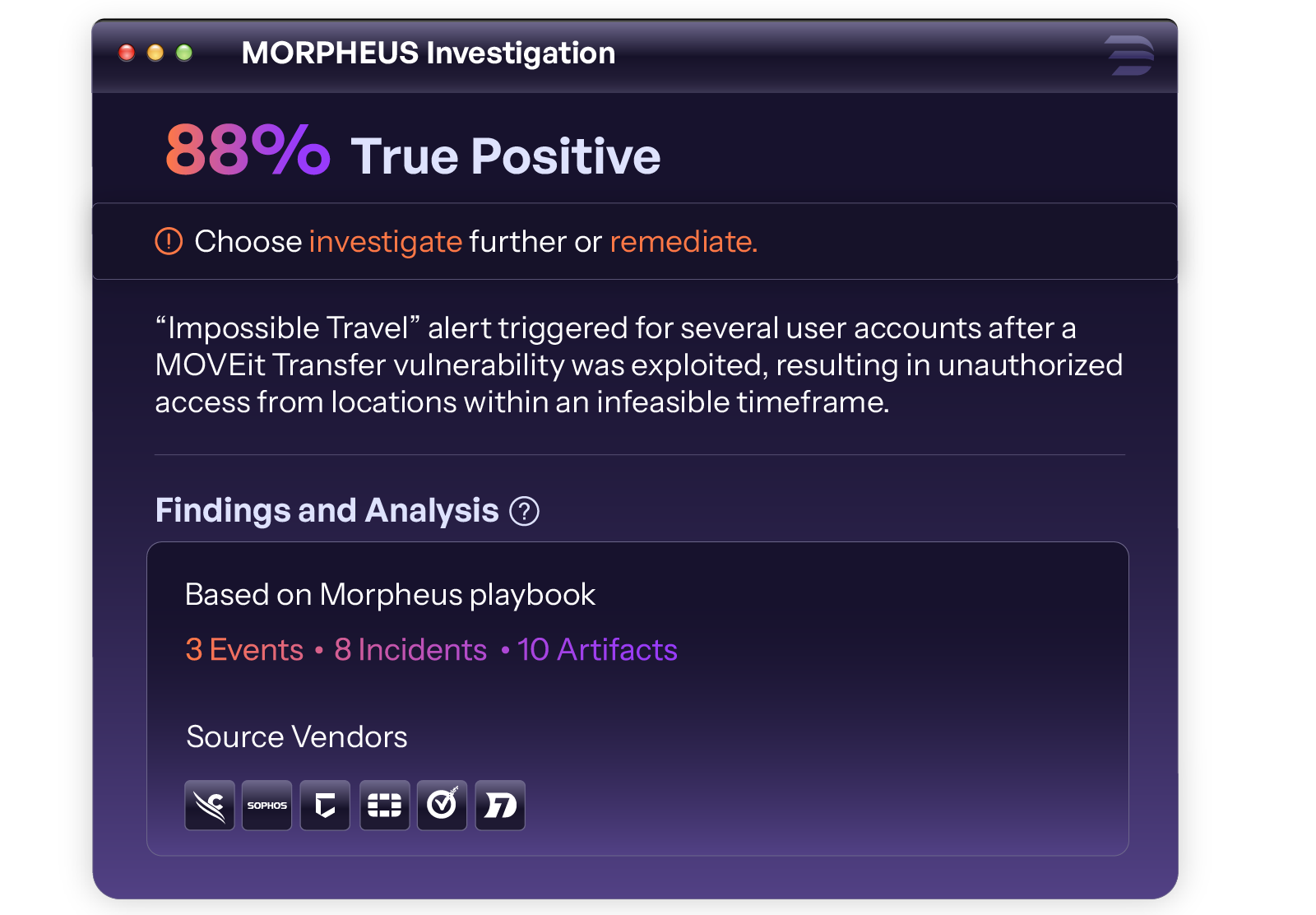
Incident summarization
Reduce investigation time and empower your team with instant access to critical insights. Instantly understand the key details of any incident with Morpheus AI’s AI-driven summaries. Our AI summarization compiles all relevant information into a clear, concise overview, enabling even Tier 1 analysts to quickly grasp the attack methodology.

Detailed AI-guided remediation steps for your team
Resolve incidents faster and more effectively with Morpheus AI’s guided remediation. Our AI provides clear, actionable recommendations based on the specific incident and your environment. From quarantining hosts to implementing certificates, Morpheus AI guides your team through the necessary steps to contain and eliminate threats.
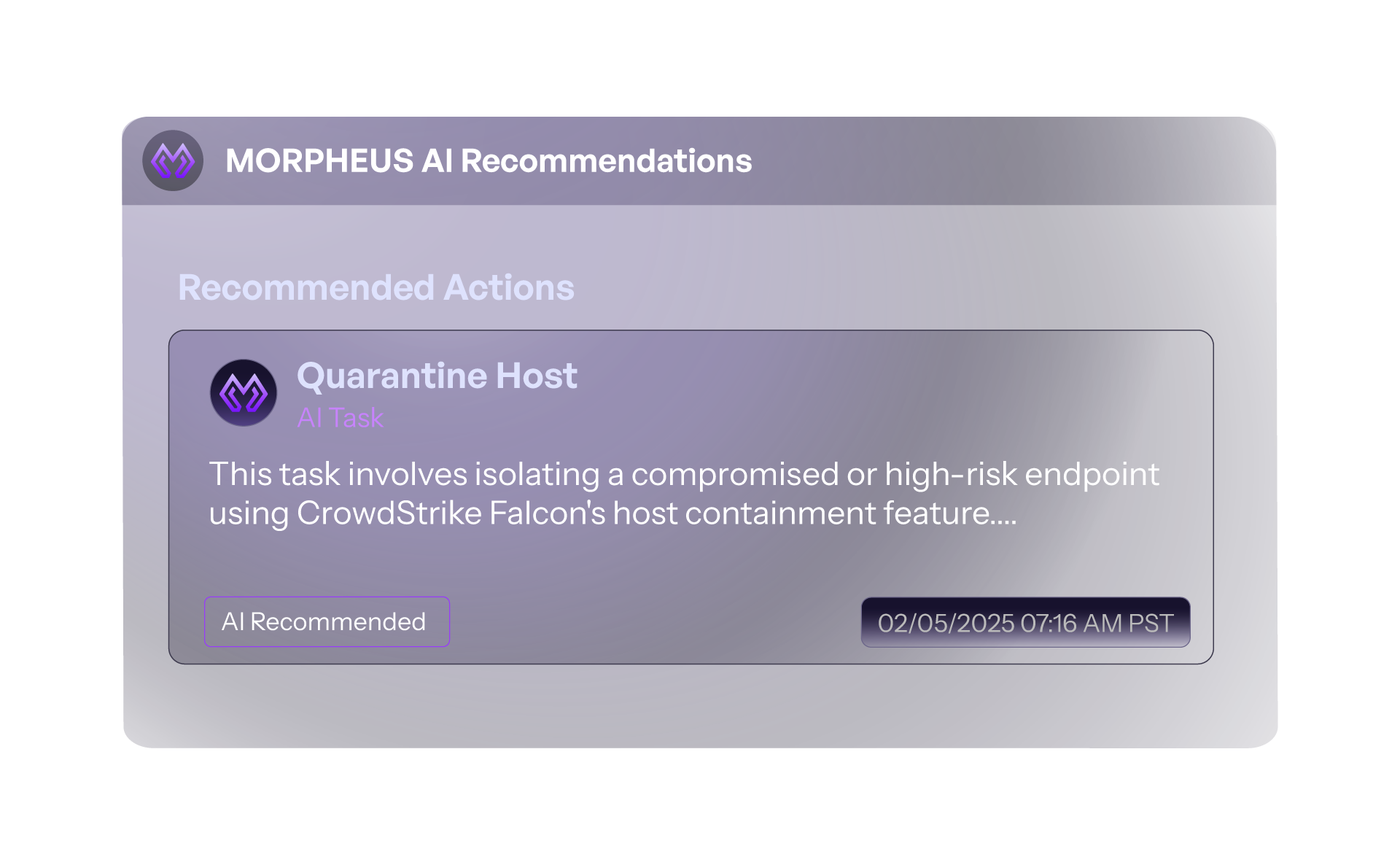
Visible code generation
Take control of your security automation with Morpheus AI’s visible code generation. Morpheus provides full access to the back-end Python code for every AI-generated playbook, ensuring complete transparency and customizability. Adapt and optimize your playbooks to meet your unique needs and maintain full control over your security processes.
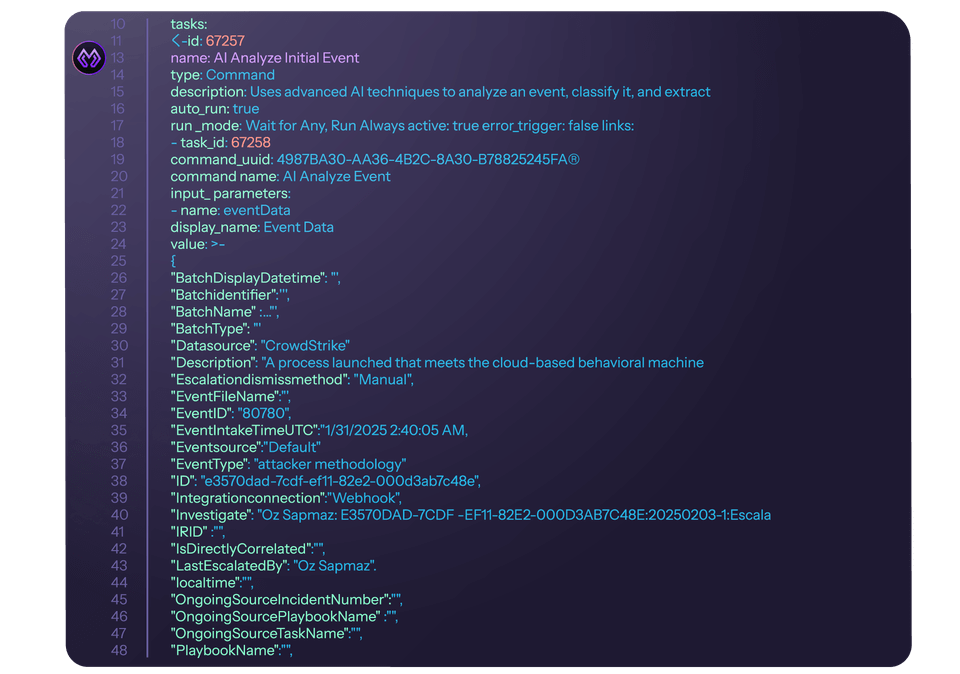
Unlock the AI SOC Advantage — Over QRadar SOAR
Investigate Every Alert
Morpheus runs down every alert in minutes, assembling an evidence-backed narrative and acting within your guardrails—without rule suppression, ignored alerts, or extra headcount.
- Proper investigations, end-to-end
- 24×7×365 autonomous coverage
- Faster closure, lower MTTR
Automation You Can Trust
Skip checklist roulette. Morpheus generates, tests, and validates automation before it ships—integrating with GitHub for auditable human approval and explaining every action it takes.
- AI-powered unit & integration tests with auto-fixes
- GitHub PRs for human approval and version control
- Natural-language edits & schema-aware generation
Escape Playbook Backlogs
If maintaining Jinja templates and transform logic is slowing response, you’re not alone. Morpheus generates stack-adaptive playbooks from live alerts—so teams respond, not repair.
- Natural-language edits
- Generate playbooks from live data
- Eliminate technical debt

“We went from 145,000 alerts to under 1,000. That’s a 99% reduction.
Our mean time to detect and mean time to respond have all dropped significantly.”

Frequently Asked Questions
Is Morpheus Really an AI SOC Tool? Isn’t it Just SOAR?
Morpheus is not a SOAR with AI sprinkled on top. It’s an Autonomous SOC platform that generates, tests, and runs playbooks directly from your live data. Unlike SOAR, which relies on manually built runbooks, Morpheus dynamically adapts workflows, correlates alerts across SIEM, EDR, IAM, and cloud, and validates actions with governance steps (unit tests, GitHub PRs, approvals).
Can I Switch from IBM QRadar to Morpheus?
Yes. Morpheus is designed for easy migration. Instead of rebuilding static playbooks, you can generate automation from active ingestions (e.g., CrowdStrike). Morpheus supports 800+ integrations, CI/CD pipelines, and version control with GitHub, making it straightforward for teams already running IBM QRadar to switch without downtime.
How Can I See if Morpheus Is Right for Me?
You can request a live demo and see Morpheus handle your own alert data. The platform gives you transparency with open YAML logic, visible code generation, and safe confirmation steps before any high-impact action. That means you get AI-driven speed with full analyst oversight and governance.
What are the key differences between Morpheus and IBM QRadar?
IBM QRadar SOAR (formerly Resilient) is primarily a case-management platform with automation capabilities, while Morpheus is a full AI SOC that automates triage, investigation, and guided remediation. The practical differences come down to how much human effort each approach typically requires.
Automation depth
QRadar SOAR commonly uses scripts or services for advanced automation. Morpheus includes autonomous triage and response—deduplication, risk scoring, enrichment, and remediation—without day-to-day scripting (behavior varies by environment).
Triage & investigation
In Resilient, analysts often handle entity resolution, enrichment, and prioritization within cases. Morpheus automates Tier-1/Tier-2 tasks, proposes next pivots, and maintains a unified timeline so context appears in one place.
Remediation workflow
QRadar SOAR deployments may involve moving between tools/tickets to contain threats. Morpheus provides close-the-loop remediation across EDR, email, identity, and network with guardrails and approvals, reducing steps from case to containment.
Governance & auditability
Changes in Resilient often involve manual approvals and documentation. Morpheus bakes in approval gates, YAML diffs, GitHub PRs, and audit trails so automation changes are transparent and defensible.
Ecosystem fit
QRadar SOAR aligns tightly with IBM’s ecosystem. Morpheus is vendor-agnostic and works with any SIEM—including QRadar—so teams can preserve existing detections while orchestrating response across the broader stack.
Which platform is better for MSSPs and enterprises?
Morpheus scales for multi-tenant MSSPs and enterprise SOCs, offering modular playbooks, case management, and governed automation.
D3 Security is not affiliated with IBM QRadar SOAR. All trademarks are the property of their respective owners. This comparison reflects publicly available information and our team’s evaluation as of October 2025.